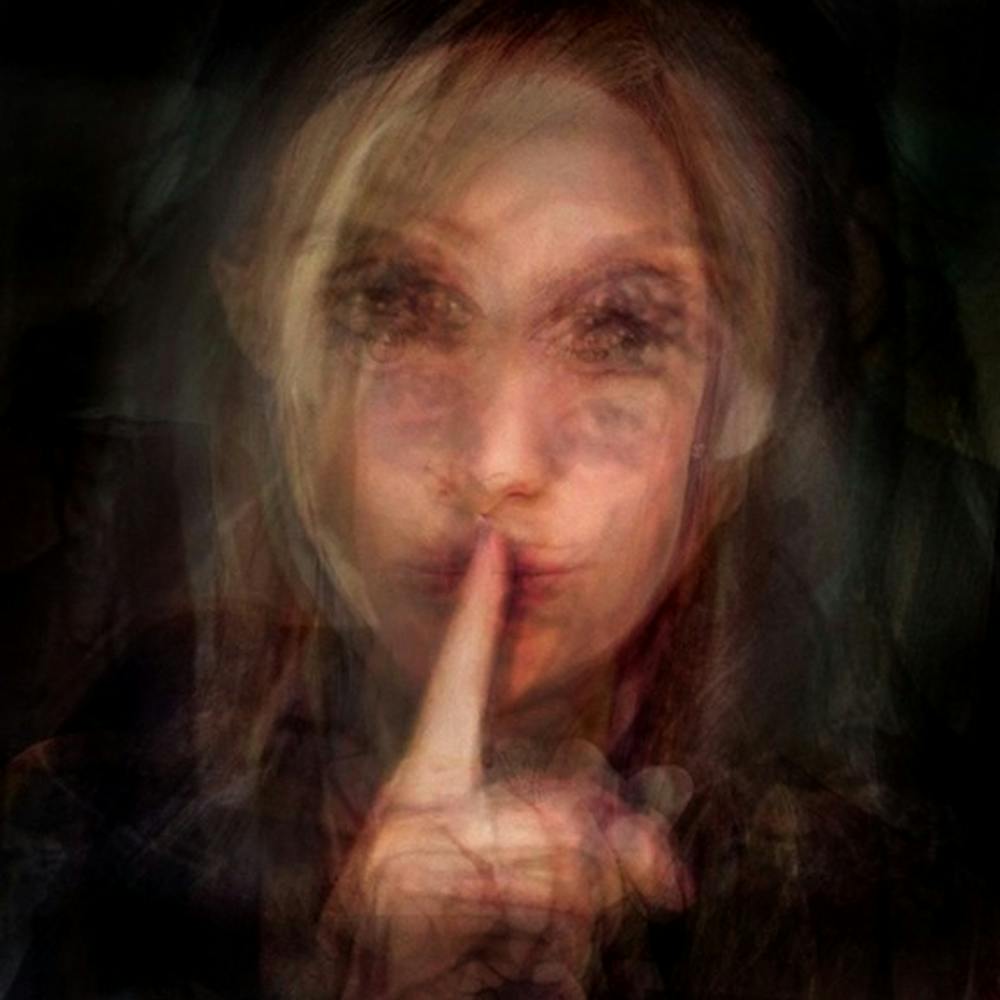How a CMU professor turned selfies into an international success
Al Wildey merges hundreds of strangers' selfies off social media platforms to create art

Al Wildey's art piece, titled #EndTheSilence, depicts woman in an abusive relationship. The piece is displayed in Grand Rapid's Fountain Street Church from Sept. 21 to Oct. 9.
A blurry woman held her finger over her mouth, asking for silence to secret abuse. The portrait of the woman, titled #EndTheSilence, was created out of 20 merged selfies that Al Wildey found online.
The Central Michigan University professor usually merges thousands of photos and aligns the eyes of the photographed people. For his 2016 ArtPrize entry, which focuses on social issues on social media platforms, he used a different method of aligning everything but the eyes in photographs.
Wildey is exhibiting five digitally merged portraits of social media campaigns at Grand Rapid ArtPrize 2016. The pieces are comprised of social issues including domestic violence, race, world hunger and LGBTQ rights.
“A role of an artist is to address the world they live in. We want to be sensitive to these issues we are trying to wrap our head around,” the Central Michigan University professor said. “These things aren’t virtual. They’re the physical reality that we deal with. To display that through these images is of great interest to me and is very important.”
Another submission, titled #FreedomTo, portrays two women kissing while holding a sign saying "freedom to be married to my beautiful wife."
The work is being displayed in the Fountain Street Church until Oct. 8.
“To have my work displayed in that church, who is into human rights, seemed like the most fitting place,” he said.

Wildey was raised in Grand Rapids. He served in the Air Force and lived in California for a few years. But he returned to CMIU to be a professor in 2003.
He returned to his hometown to exhibit his work for the first Art Prize in 2009. His piece, titled “America,” was displayed at the Open Concept Gallery.
The image was composed of 2,500 merged photographs taken during a 6,600 mile cross-country trip. This work boosted his name as an artist to an international standard. An art curator saw the work and displayed the work in Prague and the Czech Republic.
Now his artwork has been displayed in nine countries: Paris, London, Berlin, Florence, Barcelona, Prague, Izmir, Beijing and the United States.
“I didn’t expect it to be that big. Like most artists, you do it because you can’t just not do it. It’s part of who you are. It’s in your DNA,” Wildey said. “I feel very strongly that art is the process of communication.”

In 2014, his artistic journey took a twist when he decided to focus on selfies. Him and his colleague, Ren Hullender, presented “Emerging Lens-based Pedagogies of Self(ie): Precedents and Possibilities” in Berlin, Germany.
Their research found selfies weren’t purely narcissistic like most people think, Wildey said, but were a way to document daily life.
“I thought there might be a way to put together images to reflect a particular community (of people),” he said. “This year I tracked down selfies and merged them to talk about not only the social media campaign, but the people who participated in them and how they self-identify with the community as it relates to an interest or concern of theirs.”
The project inspired a spin-off in 2015 — one focusing on the small town of Clare, Michigan where, with population of only 3,000, Wildey received 800 submissions of selfies from residents.
He merged the selfies, aligning the eyes to bring the viewer’s attention to the center of the portrait. A vague outline of glasses is on the face, and the facial details make it hard to determine if the face looks young or old.
“Many selfies have a dual purpose — to show a person, but to show them in a context that enhances or describes the story of where they are,” Wildey said. “I’m interested in these self-generated stories.”

There is no usual process of creating art, he said, because there’s always something else the artist wants to do.
There’s only one routine step in the process of creation: failure.
“You’re reading things about people interesting to you, talking to other artists in the community and eventually you get this gem of an idea you want to experiment with. And then you fail. A lot,” he said. “You reach a point where something comes together, so it’s hard to place a number of hours or weeks because artists often have many things going on at once.”
One project often speaks to something in another project, Wildey said, and it becomes a huge process. That makes it nearly impossible to find an exact beginning and a finite end.
“You have to be open to the process,” he said. “Be open to the world, to risk taking. It’s being receptive to the gifts we get sometimes.”



